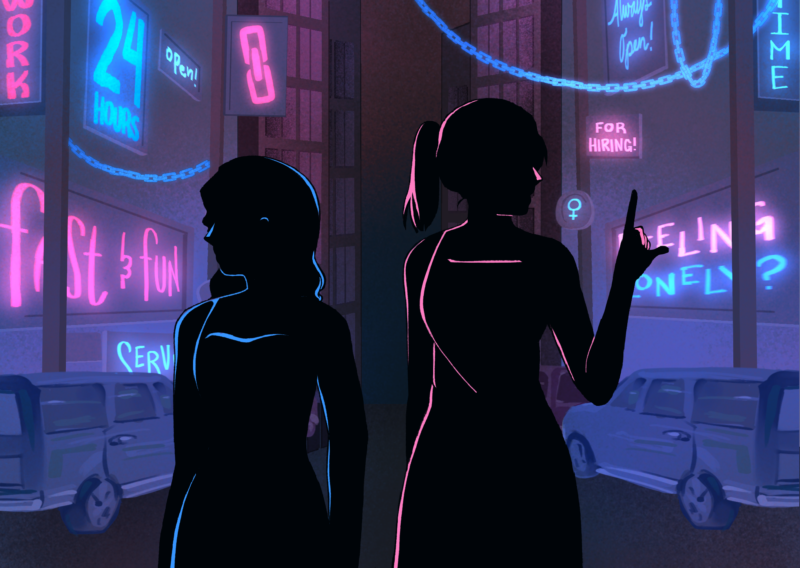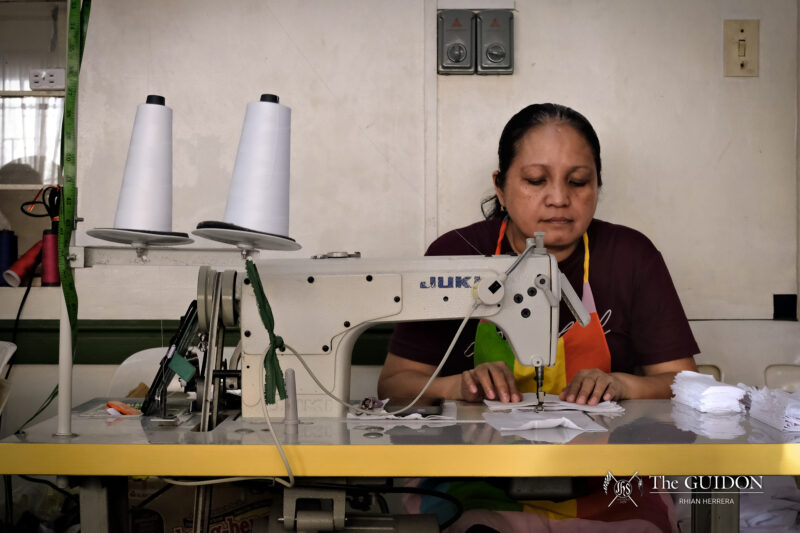Reasons for being late in class will never fail to include the dilemma of finding the perfect outfit. Whether one might be the fashionista that everyone tries to imitate or the plain Jane hiding beneath her unkempt locks, this situation is downright inescapable.
Both estrogen and testosterone-fueled students have immersed themselves into the still-growing culture that the fashion industry has to offer. With social networking sites like Chictopia and Lookbook streamlining their target to solely fit this purpose, keeping up with the current trends should not be of any difficulty whatsoever. Deciding on which among the hundred looks to choose from, however, is where the problem begins.
As painters have their canvas, young fashion vixens need a medium of output as well. And it is for this reason that the birth of the new runways came to be. The halls, the brick road, and the infamous SEC Walk have become the ‘it’ places for strutting one’s fashion swagger.
Beauty in Basics
Looking good does not necessarily entail thorough knowledge in the art of fashion. As many might have heard from way back, clothes are an extension of the self and therefore leaves us with the liberty to play around on our own.
For Topshop intern and Communication major Roxy Valencerina, “It’s not always about wearing the flashiest thing on campus. There [will always be] beauty in basics.”
True enough, this statement will speak for those who aren’t as into the whole craze of florals, vintage pieces, Topsiders, and cropped tees. As Roxy would put it, “Keeping up to date with the trends is nearly impossible, and completely dull.” This creates an infectious collection of trends strung together that, if consumed the wrong way, will destroy our own grasp of true identity.
A style, however, that is unique from the rest could be difficult to achieve. The stigmas on what print, color, or cut are categorized as trés chic tend to stipulate our supposed-to-be endless possibilities. This is where ingenuity and sheer talent kicks in—when all are in shades of black, who stands apart from the rest?
Trends and luxury brands
One of the most go-to fashion inspirations for the everyday Atenean has been Krystle Gail Uy, (BS CTM ’10). Kryz Uy has taken the Philippine fashion industry by storm, one outfit at a time. Her street chic style has gotten the attention of many, with her famous WordPress, Lookbook, and Chictopia accounts, as well as her boutique, WAGW.
Trends are, and will always be, a part of college culture, no matter how outrageous or impractical. Even Kryz had her own trend problems. “When I was in college, I followed the [Havaianas] trend dearly. Big mistake—I can’t stand wearing flip-flops in public anymore. Now I get the dress code.”
There are hindrances to following the latest fashion, however. “People who don’t have the ‘right clothes’ are ostracized by the ones that do,” Kryz explains.
“Fashion helps our culture transform into modernity, but also divides the people based on their capacity.” Social division is most evident in luxury branding. She points out that it’s difficult to follow fashion trends when luxury brands aren’t in your usual “to-buy” list.
Defining style
Perhaps, the term “fashion victim” should be redefined. In all cultures, fashion has always played an important role in society. Kimball Young in “Fashion as Collective Behavior” tackled the societal views of fashion in Japanese and European cultures and concluded that there has always been a line drawn between classes. It is dictated by the fashion of the time and it’s usually attached to the wealthy.
Even on-campus, a lot of people encounter the same problems. After all, not everyone can carry around a Longchamp bag to be abused by the school’s unpredictable weather and soiled surfaces. Although fashion can be about the brands, it isn’t a prerequisite to a great fashion sense.
“Fashion fades, style is eternal,” Kryz says, quoting Yves Saint Laurent. Psychology Today came out with an article on “The Value of Style,” which stressed the importance of character in fashion. Style is about self-confidence and self-knowledge, the article said. The style is in the wearer and there lies the distinction between fashion and style.
It’s Kryz who says it, “you don’t have to conform to the trends. If that’s all you do, I don’t think you have style, I think you’re just trendy. Fashionistas have style.” Fashion is for everyone and being in school with a beaten-up backpack is the way to go if that’s really who you are—anything goes, really.
Taking it from Kryz, “[The] key piece is personality. I think every fashionista needs that.” If there’s one fashion essential that the model/stylist/storeowner/fashion blogger can suggest we own, it is identity.
Fashion evolution
Establishing one’s identity in a sea of skinny jeans and floral skirts can be difficult, especially in an environment where the unusual is often frowned upon and mocked.
But as Roxy says, “You shouldn’t listen to other people and their negative opinions on your style. For me, if you feel confident in what you wear, whether it’s ‘in’ or not, then it’s fashionable.”
Assurance in one’s signature style seems to be getting easier, as fashion is expanding rapidly to include styles that range from subdued to eclectic. Lady Gaga is a bona fide example—whether clad in a dress made of caution tape or her signature gravity-defying frocks, she pulls everything off with just one tool: confidence.
The state of Philippine fashion is also slowly evolving to accommodate more styles that appeal to more people—no matter what their aesthetic is. Management junior Donna Hernaez sums up this sentiment: “As the days pass, people seem to be more and more open to different fashion styles and we aren’t as conservative anymore. We’re looking out and we’re interested in different ways of expressing ourselves through clothing.”
But growing style risks aren’t the only selling factors that prove how huge an influence fashion is in our daily lives.
The advent of schools built around the fashion industry has doubled, and even Ateneo is offering an elective that caters to many students’ need to make their love for fashion a worthwhile opportunity in the future.
Developed in 1995 to accommodate students who wanted a more nontraditional approach to business, the Fashion Merchandising elective offered by the School of Management “revolves around the business side of fashion and offers incredible opportunities for students who love fashion,” says Mr. Maqbool Hussain, who teaches the elective.
Topics covered in class range from fashion forecasting to setting up an online store and applying business strategies.
Keeping up
In an industry dominated by first impressions and upcoming trends, what can one do to keep up? Roxy states that this is nearly impossible, as what defines great style comes from not just being confident in what you’re wearing, but knowing what works.
Skeptics critique our generation as immersed in such a shallow grasp of culture with little or no sense of one’s identity—something we need to combat.
“We should keep in mind that fashion should not define us,” says Donna.
Going the other direction, of making sure you completely stand out, is also not a good thing. “Fashion is not always about wearing the most unique outfit or the one that creates the most buzz,” says Roxy. “Fashion is about self-expression.”
Being completely consumed by the need to be up-to-date with fashion is also another war one must fight. Trends aren’t as important as one might think, and buying from luxury brands isn’t the only trick to great style. As Donna says, “Be creative. Keeping up-to-date with trends is definitely something, but it isn’t everything.”






